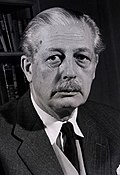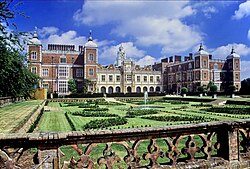Hereditary peer
The hereditary peers form part of the peerage in the United Kingdom. As of 2020 there are 814 hereditary peers: 31 dukes (including 7 royal dukes), 34 marquesses, 193 earls, 112 viscounts, and 444 barons.
From 1963 to 1999, all non-Irish peers were entitled to sit in the House of Lords, but since the House of Lords Act 1999 was passed, only 92 are permitted to do so, unless they are also life peers.[1]
Peers are called to the House of Lords with a writ of summons.
Hereditary Peer Media
The House of Lords (sitting in its old chamber, burned down in 1834) as drawn by Augustus Pugin and Thomas Rowlandson for Rudolph Ackermann's Microcosm of London (1808–1811)
Letters patent granting the Dukedom of Marlborough to Sir John Churchill were later amended by Parliament.
In 1984 Harold Macmillan, a former prime minister, was the last non-royal recipient of a hereditary peerage, the Earldom of Stockton.
Matt Ridley, science writer and conservative journalist, is the Viscount Ridley.
Many hereditary peers are associated with famous estates such as Hatfield House; many notable estates are open to the public.
References
- ↑ "Members of the House of Lords". UK Parliament. 2012. Archived from the original on 2013-01-03.




